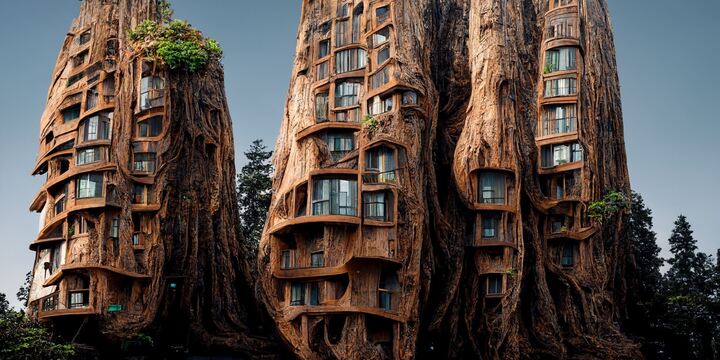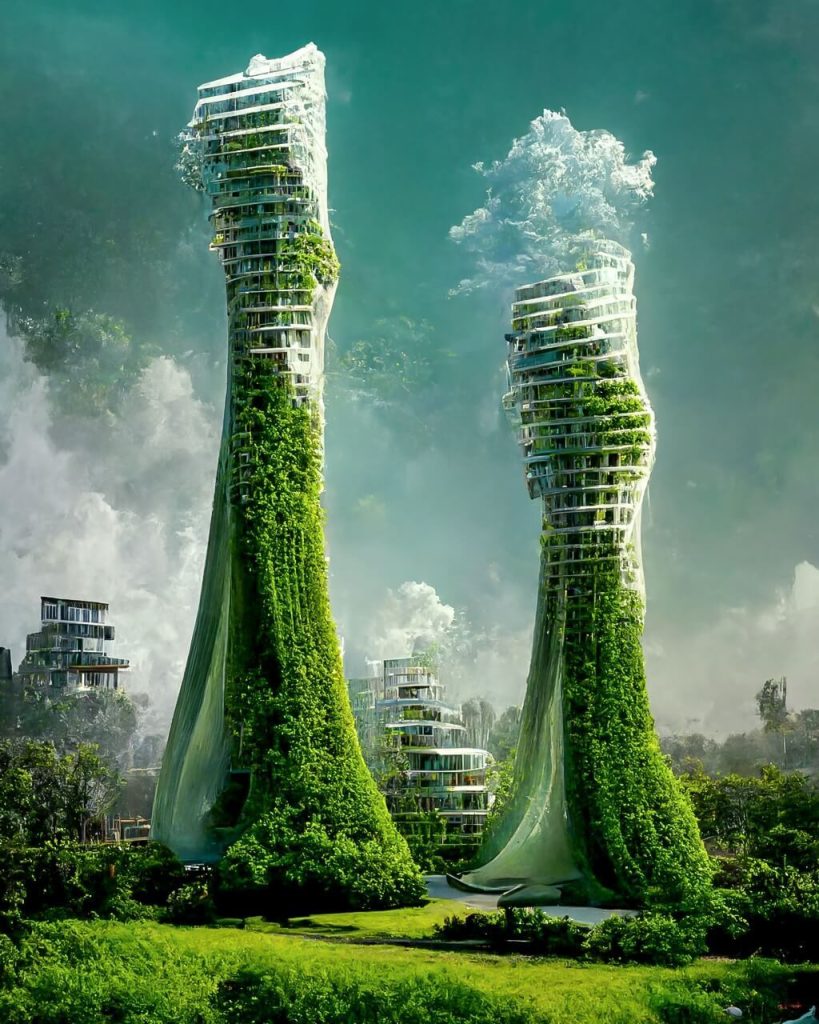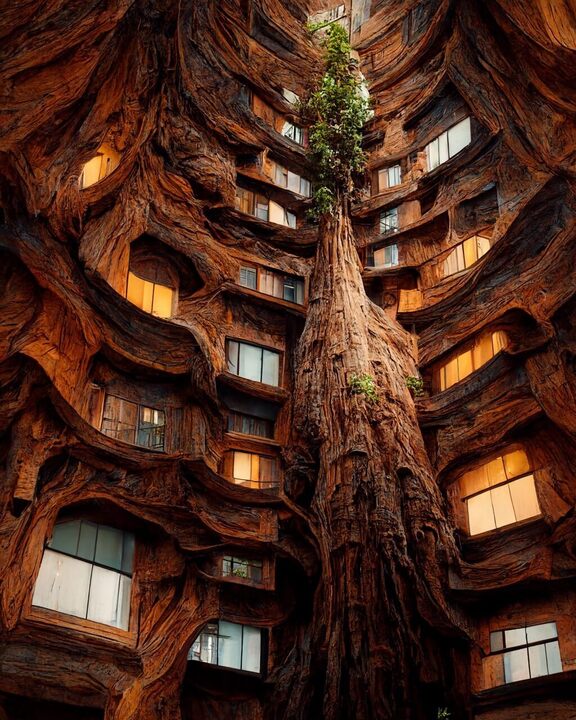In this interview, Ar. Manas Bhatia sheds light on the importance of AI (Artificial Intelligence), and reforming our approach in design by involving its strength.
Ar. Manas Bhatia earned a Bachelor of Architecture degree from Manipal University Jaipur and possesses a robust background in graphic design and visual communication. He is passionate about exploring the potential of artificial intelligence in architecture and design. He has created innovative conceptual projects using AI, such as “AI x Future Cities” and “Symbiotic Architecture”, which gained global recognition.
Excerpts from the interview with Ar. Manas Bhatia
1: Share some of the key moments that shaped your journey in the field of Artificial Intelligence and Architecture.
Ar. Manas Bhatia: During my undergrad years only I was interested in software and technologies. However, the traditional process in design supported more usage of AutoCAD, rather than the tools of Revit and BIM. Before that, I didn’t agree with the opinion but had to work likewise. That is when I came across works of ANT Studio, which dealt with natural materials, and computational techniques. Being inspired I attended a workshop in New Delhi and met Manish. I was determined to learn from him and later on, I joined ANT Studio.
Here at the firm, we completed a range of projects, from government and private residential to art installations. We used new-age technologies and computational techniques to develop forms inspired by nature. Interestingly most firms have repetitive steps in the design process, which better tools and technologies can optimize. This is how I discovered AI and more specifically generative AI tools such as mid-journey.
My interest in AI spiked by designing and receiving recognition for them. After a few years, I decided to expand my knowledge and therefore enrolled in Colombia. Here I am exploring what’s more to AI and the people working on it. It was a massive journey, and I am further enthused by the domain of AI and design.

2: How do you perceive the technological evolution impacting the creative process and outcomes in architecture?
Ar. Manas Bhatia: AI is enabling a lot of creativity in designers, allowing them to prototype and develop new architectural styles rapidly. Generative AI tools make rendering much faster; what used to take days now takes minutes. AI tools, powered by large datasets, create precise outputs and predictions. Over the past couple of years, AI-generated images have vastly improved, requiring fewer prompts to achieve photorealistic results. While AI can generate random images quickly, controlling the narrative still requires human input. We can’t rely entirely on AI yet, but it significantly speeds up the process. As AI becomes embedded in more software, the design process will be much more optimized and efficient.
3: Can AI have an impact beyond visualization to enhance design decisions and the execution processes in the future?
Ar. Manas Bhatia: Some platforms use generative and procedural design to create floor plans. That means you feed in space type, building typology, and size, and tools automatically generate floor plans and 3D models. Generative design uses a set of parameters and limited data, adding AI that allows it to learn and improve continuously. For example, AI will optimize window functions based on weather data and sunlight data; learning over time and predicting more accurately. An AI trained in a year is way more efficient than using sensors. Integrating AI into 3D modeling, floor plans, and building functions speeds up the process and proves reliability.

4: Concerning the integration of AI with various software, does the accessibility towards AI get any easier?
Ar. Manas Bhatia: AI is making design more accessible. In computational design, using tools like Grasshopper and Python scripting requires coding knowledge. Traditionally, we communicate with computers using their language, but AI allows us to use natural language, removing the need for designers to learn coding. This shift lets designers focus on creating better spaces rather than learning complex programming. It’s like speaking human to computer, not computer to computer.
5: How can we develop effective prompts to generate AI-driven designs that are both efficient and can be executed by students and architects?
Ar. Manas Bhatia: Before using AI tools, it’s important to have a clear thought process. You should ask the right questions and know what you want to achieve. Decide on the kind of image or 3D model you want AI to generate. One should be in control of the narrative rather than relying on AI’s outputs and getting lost in its many iterations. Start by jotting down ideas on paper. If you’re inspired by a famous architect, analyze their work—consider the elements, style, materials, and environment. Once you have this information, create a prompt. Combine different AI tools, like ChatGPT, to refine your process. AI will follow your guidance, so clear communication is key to getting the results you want.

6: Looking at the current architectural landscape, how do you think architects can harness this power of technology to curate sensible, efficient, and environmentally conscious architectural designs?
Ar. Manas Bhatia: A lot is happening in the realm of generative design. Google’s Sidewalk Labs, for instance, was working on projects to create innovative urban environments using AI and data-driven methods, although the project was eventually dissolved into other initiatives. Their approach involved using generative design to develop townships based on various parameters such as building heights, courtyard sizes, street grades, and sunlight exposure. These parameters are crucial for understanding how building forms affect the environment, including how much daylight reaches the streets and how comfortable outdoor spaces are. By adjusting these variables, designers could create multiple iterations to find the optimal design for comfort and sustainability.
With AI, these tools can process vast amounts of data and learn from each design iteration, improving over time to provide more optimized results than traditional generative design methods. AI integration makes these tools smarter by allowing them to adapt and evolve, leading to better design decisions and more efficient urban planning. This results in environments that are not only aesthetically pleasing but also functionally superior, maximizing comfort and sustainability.
7: What job opportunities do you think can be generated with the evolution of AI?
Ar. Manas Bhatia: New roles are emerging, especially as we shift towards virtual environments and the metaverse. Though the metaverse is still developing, it promises to bring new rules and possibilities. With AI handling repetitive tasks, designers can focus more on creativity and the emotional impact of spaces. Instead of creating mundane details like window schedules, we can use AI to streamline these processes and concentrate on how spaces make us feel. Education will also benefit, as new tools require teaching, and I’ve started leading online workshops on these AI tools.

8: How institutions can incorporate a wider perspective towards architectural education, beyond the basics of architecture, and embrace technology as a whole curriculum?
Ar. Manas Bhatia: Most of the architecture curricula in India sticks to traditional methods, which are important, but have to be merged with modern tools and software. Generative and procedural design should be taught to help create the best options by exploring various possibilities. Basics of machine learning, Python, and coding could also be included, even though AI may eventually make coding less relevant. It is also important to the students that this would provide a continued learning opportunity through new tools, guest lecturers from diverse design practices, and refreshed content, so they will remain relevant and current with their education. For example, it is less relevant today to learn how a batten door works when that could be replaced with the education of current technologies.
9: As we come to the end of our discussion, what would be your piece of advice for the upcoming architects and designers who are inclined towards AI and technology?
Ar. Manas Bhatia: Stay curious and explore beyond traditional teachings. Talk to diverse people to gain new insights and find what interests you most in design. Architecture isn’t just about building design; it includes product design, lighting, facades, and visualization. Don’t be limited to one path—explore various related fields. Remember, architecture can be overwhelming with information, so focus on what truly interests you. Don’t get discouraged; you’ll find your niche by the end of your studies. Then, one can venture into that.
Conclusion:
In conclusion, Ar. Manas Bhatia’s discussion highlights the transformative impact of AI on architecture. His transition from traditional methods to leveraging AI tools demonstrates how technology can enhance creativity, streamline processes, and drive innovation in design. Manas encourages future architects to stay curious and explore various fields, emphasizing that AI opens new possibilities for efficient and imaginative design. By integrating these advancements into architectural education and practice, we can look forward to a future where design is both more innovative and responsive to our needs.

